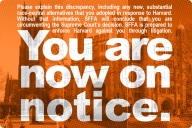You have /5 articles left.
Sign up for a free account or log in.
While relatively few private colleges experienced net tuition revenue declines in the years preceding the economic crisis, about 15 percent are projecting stagnant or falling revenues for the 2011 fiscal year, Moody’s Investors Service reported Thursday.
Of 128 respondents, 15 percent of private institutions forecast zero growth or decreases in net tuition revenues for the current fiscal year, which ends June 30 for most colleges. That’s quite a change from the period between 2002 and 2008, when no more than 5 percent of private colleges saw annual decreases. The declines don't mean private colleges are cutting tuition, but rather that revenue lost from increases in discounting rates, which are at a 41 percent median, may be greater than revenue gained by tuition hikes.
As for public universities, 19 percent expect declining net tuition and fee revenue for 2011.
While it's notable that significant numbers of institutions expect declining tuition revenues, the majority of public and private colleges are still projecting growth.
Apart from forecasting the coming months, the Moody’s report also provides a glimpse into how colleges fared over the last tumultuous year. Mirroring past recessions, the economic downturn meant higher tuition at many public universities during the 2010 fiscal year. Among respondents, 96 percent reported net tuition and fee revenue growth, with a median increase of 11 percent.
As for private colleges, 15 percent reported actual revenue declines in 2010, significantly higher than the decreases of 3 percent to 5 percent in the years preceding 2009.
There are several data points reflected in the Moody’s report that speak to the continual economic pressures facing students and their families. For instance, Pell Grant revenues at public institutions are expected to increase to a median of $20 million per college this fiscal year, up from $17 million in the 2010 fiscal year. While some of that growth is attributable to changes in Pell Grant requirements and funding levels, the increases also reflect a spike in the number of low-income students who qualify for federal aid.
There is also some evidence to suggest that reductions in employer tuition reimbursement programs for graduate studies have taken their toll on public higher education. The 58 percent of institutions that reported increased enrollments in graduate and professional programs for the fall 2010 semester constitute a “drastic decline” from last year, when 91 percent of respondents reported gains, Moody’s noted. Among those colleges that saw increases, the growth was smaller than in the year prior. The median enrollment increase was 1 percent, compared with 4 percent in 2009.








